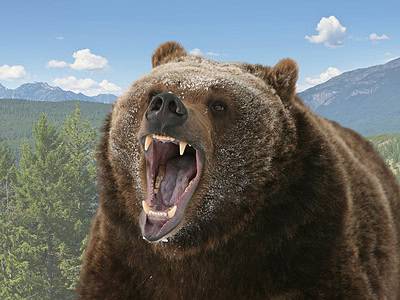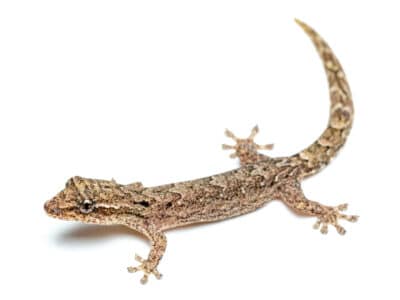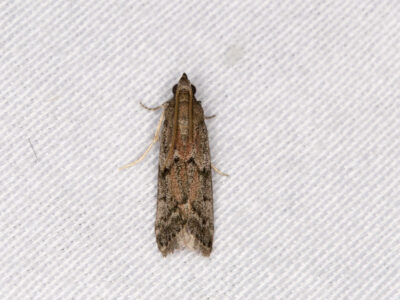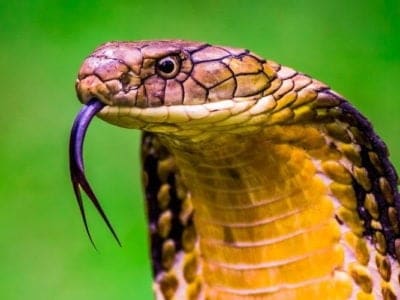Siberian Ibex
Capra sibirica
There’s a population of Siberian ibex in New Mexico
Advertisement
Siberian Ibex Scientific Classification
- Kingdom
- Animalia
- Phylum
- Chordata
- Class
- Mammalia
- Order
- Cetartiodactyla
- Family
- Bovidae
- Genus
- Capra
- Scientific Name
- Capra sibirica
Read our Complete Guide to Classification of Animals.
Siberian Ibex Conservation Status
Siberian Ibex Facts
- Name Of Young
- Kid
- Group Behavior
- Gregarious
- Fun Fact
- There’s a population of Siberian ibex in New Mexico
- Estimated Population Size
- Around 256,573 individuals in the wild, but its conservation status is near threatened.
- Biggest Threat
- Humans, snow leopards, habitat destruction
- Most Distinctive Feature
- The male’s huge, curved, ridged horns
- Other Name(s)
- Gobi ibex, Mongolian ibex, Himalayan ibex, Central Asian ibex, Altai ibex, Tian Shan ibex
- Gestation Period
- About 6 months
- Litter Size
- 1
- Habitat
- Mountains, rocky, semi-arid places, alpine meadows
- Predators
- Humans, snow leopards, golden eagles, wild dogs, wolves, wolverines
- Diet
- Herbivore
- Type
- Mammal
- Common Name
- Siberian Ibex
- Number Of Species
- 1
- Location
- Central Asia
- Group
- Herd
Siberian Ibex Physical Characteristics
- Color
- Brown
- Grey
- Black
- Skin Type
- Hair
- Top Speed
- 43.5 mph
- Lifespan
- 15 to 17 years, 22 in captivity
- Weight
- 66 to 220 pounds
- Height
- 26 to 43 inches at the shoulder
- Length
- 51 to 65 inches
- Age of Sexual Maturity
- Two years for females, as long as five years for males
- Age of Weaning
- Five to eight months
View all of the Siberian Ibex images!

The Siberian ibex is the “Sure-footed Goat of Siberia”
The Siberian ibex amazes onlookers for at least two reasons. First, you can’t watch it scaling the cliffs of its mountain habitat without holding your breath. How does such a large animal climb such sheer rock faces without plunging to its death?
Even baby ibexes jump from one 10,000 foot high ledge to the other as if it was a game.
The other thing is the size of the male’s horns. They are huge, ridged, and curve backward. How does his small head support such horns? Their magnificence has cost many an ibex buck his life at the hands of a trophy hunter.
Still, undaunted by cliffs and predators, the Siberian ibex abides.
4 Incredible Siberian Ibex Facts!
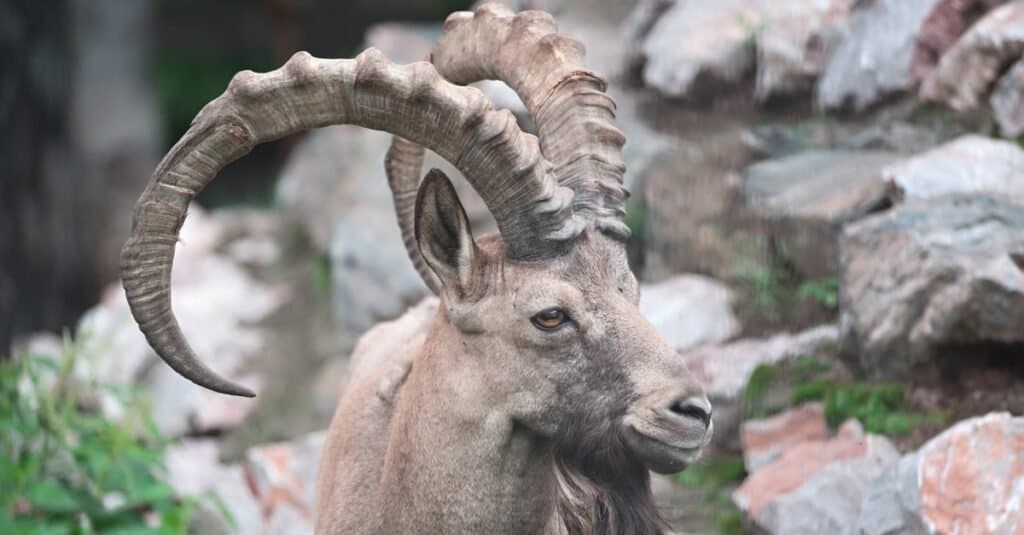
The Siberian ibex is the heaviest species of goat.
©USBFCO/Shutterstock.com
Here are four facts to know about the Siberian ibex:
- It is the longest and heaviest of the goats, though the markhor is a little taller. It also has the largest horns of the goats.
- It may be a subspecies of Capra ibex, the Alpine ibex, which lives in the Alps of Europe.
- The horns of the male can grow to 45 inches, and no two pairs of horns are exactly alike.
- Where a herd of ibex feeds depends on whether it’s made up of males or females. Females, who are responsible for the kids, are more often found near water and plants high in nutrients.
Scientific Name
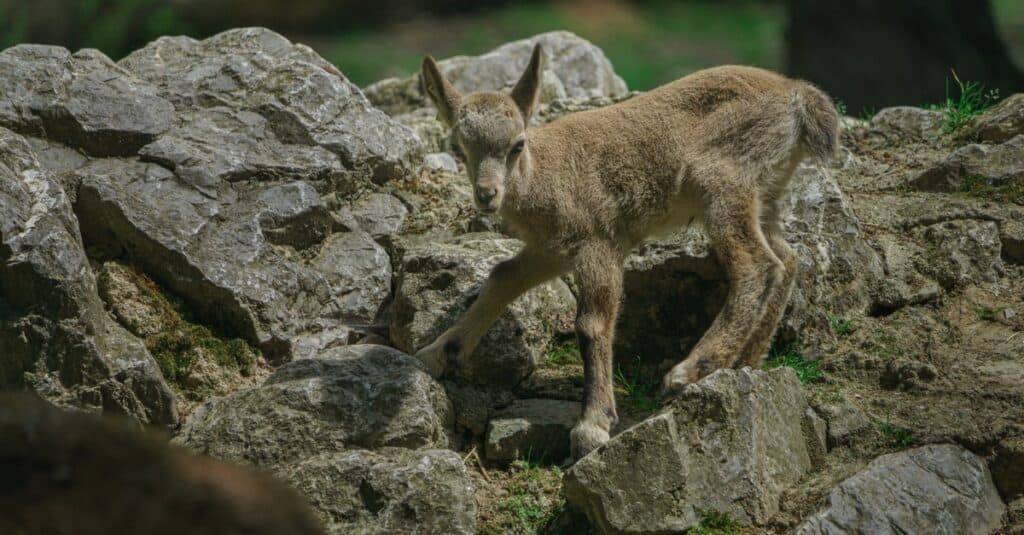
Siberian Ibex scientific name is
Capra sibirica..
©Josef_Svoboda/Shutterstock.com
The ibex’s scientific name is Capra sibirica. Capra is Latin for “goat,” and sibirica means “of Siberia.” Though some scientists believe there are no subspecies, others believe there are four.
They are:
- C. s. sibirica
- C. s. alaiana
- C. s. hagenbecki
- C. s. sakeen
Evolution and Origins
Biologists estimate that more than 256,000 wild Siberian ibex inhabit various regions across Central Asia. However, despite their relatively large numbers, these populations are dwindling, and the conservation status of these animals is classified as “near threatened.”
Ibex have been around since the Pleistocene era. During this time, the Alpine Ibex and the Spanish Ibex split and evolved from an extinct species called Capra camburgensis.
Appearance
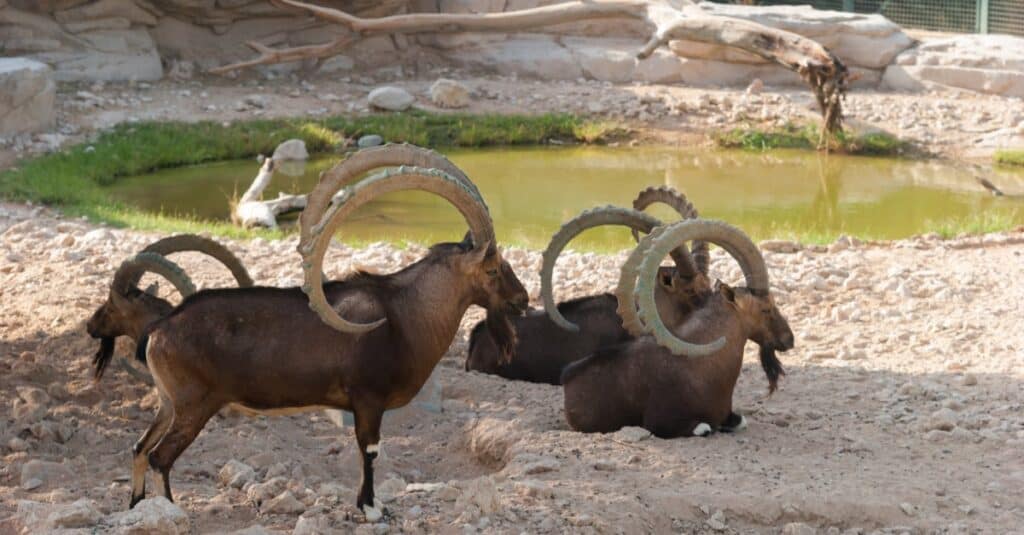
Male Siberian ibex (Capra sibirica) are much larger than females.
©Photonell_DD2017/Shutterstock.com
Of the nine species in the Capra genus, the Siberian ibex is the largest. Males can be 4.26 to 5.41 feet long, stand 2.62 to 3.28 inches high at the shoulder and weigh 176 to 220 pounds. Females are smaller, with an average length of a bit over 4.43 feet and a weight of 66 to 88 pounds. They are robust animals, with short, thick necks and barrel ribs.
They have straight muzzles and backs and both males and females have beards and a scent gland beneath the tail. The male has a longer beard and sports a spectacular set of horns that can be nearly 5 feet long. Curved and ridged, they’re not antlers because they’re not shed and continue to grow for as long as the animal lives. Female Siberian ibex also have horns, but theirs are much smaller and thinner.
The animal has an unusual amount of names, largely because of the variations in its coat. The colors of the coat differ depending on the ibex’s age, sex, size, and where it’s found. One thing the Siberian ibex shares with other ibex is that it has a pale belly and a dark stripe down its back.
Other than that, some ibexes have coats that are yellowish, dark brown, or even reddish. They also molt in the warmer months, and their summer coat is paler than their winter coat.
Behavior
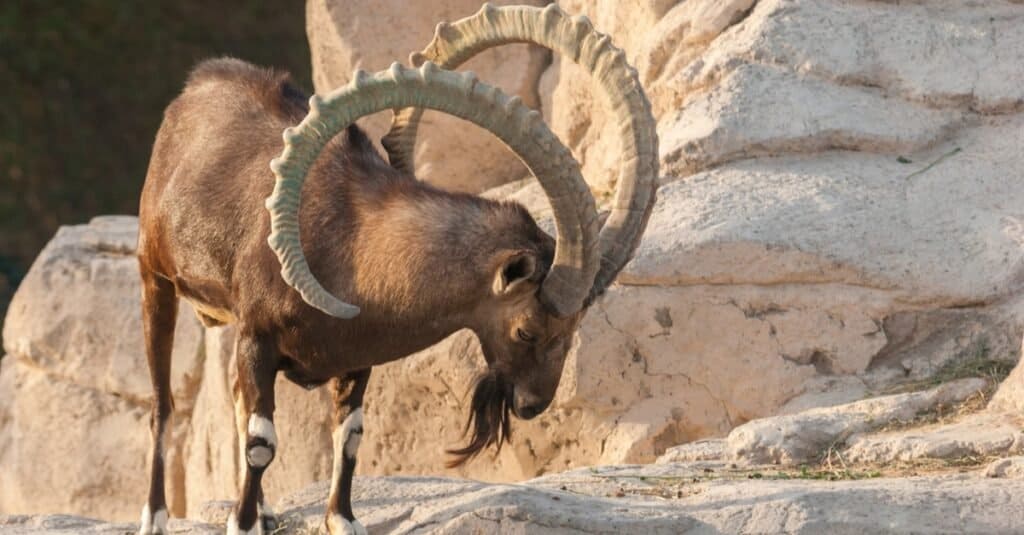
The Siberian ibex
is a herd animal that travels in groups of up to 30 goats.
©Photonell_DD2017/Shutterstock.com
Siberian ibex gather in herds that can range from five to as many as 30 animals. They are segregated by sex and age.
Females form herds with their kids, juvenile males form herds, and older males can form herds called bachelor herds, though sometimes males are solitary. The herds greatly expand during the rut when the males join the female herds to mate. Save the breeding season, ibex spend much of their day looking for and eating food.
The ibex is often found as high as 16,400 feet in the mountains during the summer. During the winter they come down to tundra or the alpine meadows as low as 1640 feet above sea level in search of food. They forage along the tree line but almost never go into the forest. They can be seen scraping away snow with their hooves to get at forage beneath it.
Because they have a number of natural predators, Siberian ibex are always on the lookout for danger. If they sense danger, kids bleat, and adults whistle to each other. Scientists also discovered that the animals always stayed close to an escape route.
Habitat
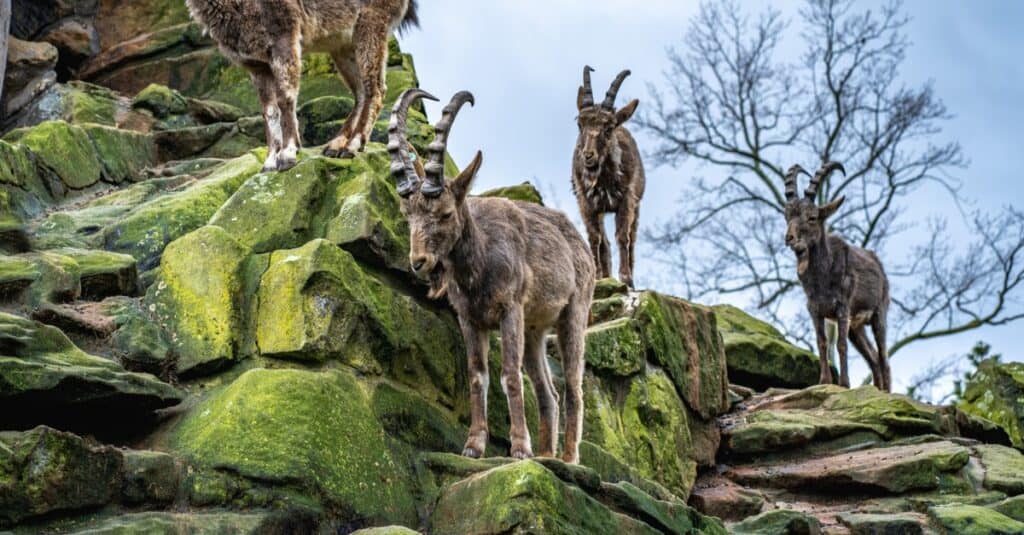
This type of goat is found mostly in Central Asia.
©Michal Hlavica/Shutterstock.com
Siberian ibex is found in Central Asia, in areas of countries such as Tajikistan, China, India, Afghanistan, Kazakhstan, Mongolia, Pakistan, and Russia. They are perfectly at home among cliffs and steep slopes of several mountain ranges, including the Himalayan, Sayan, Pamir, and Alay Mountains. These mountains are so tall and steep that it’s dangerous for all but the most surefooted predators to reach.
Ibex can run as fast as 45 miles per hour and can jump over six feet straight up into the air, but they were really built to scale mountains and cliffs. This is because they have hard, sharp-edged hooves whose bottoms have soft somewhat caved in pads. As the ibex moves from one rock face to another, its hooves can hold on like a suction cup.
Diet
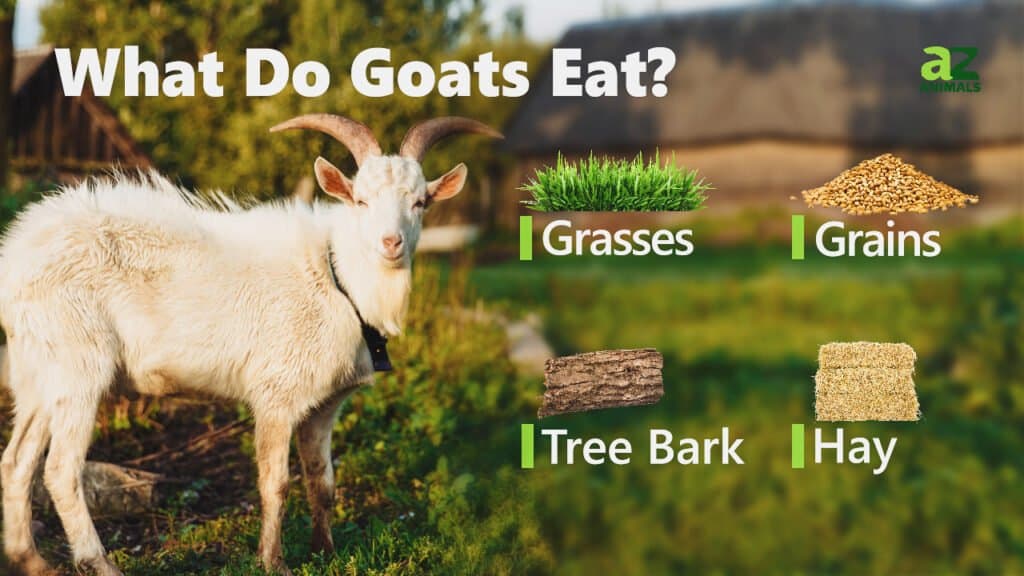
The Siberian ibex has an herbivorous diet, and because of that, it spends much of its day foraging. Ibex are ruminants and have multi-chambered stomachs that help them break down the tough cellulose in their diet.
Fortunately, the diet is varied and the ibex has been seen to eat at least 140 different kinds of plants. They include green grass and brush, especially during the warm months. In the autumn they’ll also eat bark and stems, shoots, leaves, lichen, and the fruits of dog roses and currants.
During the harsh winters, they can often be seen looking for food on the south slopes of mountains because they get more sun, which means they have more food. Ibex need water but can go for a few days without it. They also benefit from salt licks.
Male ibex can eat as much as 35 pounds of food a day while females eat 18 to 22 pounds.
Predators and Threats
Besides humans, who do hunt them for sport, Siberian ibex have a good number of natural predators. The number one predator is the snow leopard, who is almost as at home on the rocky cliffs of the Himalayan Mountains as the ibex is. Though other predators take unprotected kids, the snow leopard can tackle adults.
Other predators are:
- Golden eagles
- Dholes
- Eurasian lynx
- Brown bears
- Wolves
- Foxes
- Wolverines
The ibex is also the host of parasites. Interestingly, the presence of an ectoparasite such as a tick is beneficial to many of the birds who share the ibex’s habitat. Magpies, for example, eat the ticks that they find on the ibex.
The stresses of the rut also weaken male ibex, which makes it easier for them to be taken by large carnivores.
Reproduction and Life Cycle
The breeding season or rut is when the herds of ibex come together. It usually begins around October and can continue into January, depending on the weather and the area. Bucks fight for the right to mate with available females.
Sometimes they’ll clash horns, but serious injury is rare. A victorious buck can guard a harem of as much as 15 does. Generally, bucks are ready to breed when they’re about five years old because then they’re large enough to battle other males. Even so, they won’t be fully grown until they’re about nine. Females can start breeding when they’re about two.
The buck will court a doe for as long as half an hour or more until she accepts him. They might need to leave the rest of the herd for a while to get away from competitive bucks and actually mate.
The doe is pregnant for about six months. About a week before she gives birth she leaves the herd to give birth by herself. Ibex usually have one kid at a time but two or even three babies aren’t unheard of. Kids weigh about 6.6 pounds, have thick coats, and can walk shortly after birth.
They start growing horns when they’re about a month old. The mother rejoins the herd after about a week, but while she forages she leaves the baby in a secret spot to keep it safe from predators. When the kid joins the herd depends on how well it can maneuver over the mountains.
Though it can eat grass soon after it’s born, it is weaned when it’s five to eight months old. Still, the kid may stay close to its mother for as long as a year.
The lifespan of the Siberian ibex male is about 15 years, while the lifespan of the doe is about 17 years. Captive ibex can live over 20 years.
Population
Biologists believe there are over 256,000 wild Siberian ibex spread out over Central Asia. Yet, the populations are in decline, and the animal’s conservation status is near threatened.
Still, some scientists do not believe it is actually endangered and place it in the least concern category.
View all 293 animals that start with SSiberian Ibex FAQs (Frequently Asked Questions)
Are Siberian ibex carnivores, herbivores, or omnivores?
Siberian ibex are herbivores, and they eat grasses such as timothy and oat grass and other plant materials.
Where do Siberian Ibex live?
Siberian ibex live in the mountains of Central Asia.
What do Siberian ibex eat?
Besides grass, Siberian ibex also eat twigs, buds, flowers, leaves, and shoots. They’ll also eat fruit, moss, and lichen.
How big does a Siberian ibex get?
A male Siberian ibex can be 5.41 feet long, 3.28 feet high at the shoulder and weigh well over 200 pounds.
Is Siberian ibex endangered?
According to the IUCN, the Siberian ibex is endangered. It was listed as near threatened as of 2021.
How many Siberian ibex are left in the world?
A bit over a quarter of a million of these wild goats is left in the world.
What is the size of the female Siberian ibex?
The female Siberian ibex is about 4.4 feet long, has a chest that’s 2.4 to 2.9 feet in circumference, has a tail that’s 4 to 7 inches long, and weighs between 66 and 88 pounds.
Thank you for reading! Have some feedback for us? Contact the AZ Animals editorial team.
Sources
- Facts and Details / Accessed November 15, 2021
- Live Science / Accessed November 15, 2021
- Zoo Berlin / Accessed November 15, 2021
- Clemson University / Accessed November 15, 2021
- ITIS / Accessed November 15, 2021
- Wikipedia / Accessed November 15, 2021
- IUCN / Accessed November 15, 2021











